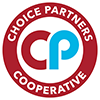Fueling Innovation Across Disciplines
Fueling Innovation Across Disciplines
“The printers have helped us broaden the scope of projects coming through our center and provided much-added value for students as they develop their prototypes.”
– Malcolm Cooke / Case Western Reserve University
Case Western Reserve University established the Sears think[box] as an innovative and entrepreneurial space for every student on campus and the surrounding community. As one of the largest university-based innovation centers in the world, Sears think[box] provides an environment where hands-on education, design, development and product commercialization not only take place, but intersect.
Today, the innovation center hosts more than 5,000 monthly visitors, many of whom use Sears think[box]’s 3D printers to bring their ideas to life. Students, faculty, alumni and community members have used the center to create everything from bracelets, belts and custom exterior signage for a local business, to bone specimen replicas.
Enhancing Education & Supporting Companies
Located in a seven-story, 50,000 square foot facility, Sears think[box] is an excellent example of how 3D printing and other innovations greatly enhance the educational experience while also satisfying the needs of 21st-century employers. The Stratasys 3D printers on site allow users to rapidly prototype parts (and even entire assemblies) out of white ABS plastic.
Sears think[box] manages the processing and provides support to the high volume of users who visit the facility every day. “We provide the whole service,” said Malcolm Cooke, associate professor for Case School of Engineering in Cleveland. “Users submit their STL files to us online, we handle all of the pre- and post-processing, and then deliver the final product to them.”
Using six different 3D printers, including one that supports the use of soluble support materials, Sears think[box] can provide fast and efficient services to a wide range of users. “The printers have helped us broaden the scope of projects coming through our center and provided much-added value for students as they develop their prototypes,” said Cooke. “During the prototype and design iteration stages, we’re able to provide very fast and efficient service using our Stratasys machines.”
The Interdepartmental Twist
Before Sears think[box] opened, the use of 3D printing on Case Western Reserve University’s campus was limited to a small section of engineering students working with professors who had access to such equipment. “We had two 3D printers in a design studio that was basically used by students who registered for two specific engineering courses,” said Cooke. “No one else had access to them.”
But once the university opened Sears think[box] up to its entire campus and the surrounding community, that changed drastically. Now, design students use the innovation center to build off-road vehicles for the Baja SAE Intercollegiate Design Competition; robotics students produce parts for their NASA Robotics Competition submissions; and medical students use 3D printed brain parts to enhance their neuroanatomy learning.
Chosen for their robust capabilities and user-friendly software platform, Stratasys 3D printers put the power of exploration and alternative design iteration into the Sears think[box] user’s hands. “They can get prototypes very quickly and early in the design stage, which translates into more design modifications,” Cooke said. “They can then communicate the design to team members. This is much easier than just looking at a CAD screen.”
Cooke sees even more 3D printers in Sears think[box]’s future and is particularly interested in adding more material choices to the center’s current lineup. “I’d like to provide students with as many different technologies and material choices as possible,” said Cooke.
The university is equipping students with skills and team-building experience that today’s employers expect. “Most companies want technical skills and multidisciplinary team experience,” said Cooke. “Through Sears think[box], we’re able to promote the use of creativity, innovation, and entrepreneurship across campus. This, in turn, supports a wide range of inter-disciplinary exploration and activity.”

![Case Western Reserve University Sears think[box] encourages ingenuity](https://www.x-cal.us/sites/default/files/styles/large/public/ThinkboxExteriorbyEricHanson2I0A6498_lg.jpg?itok=d9ZJAig2)



